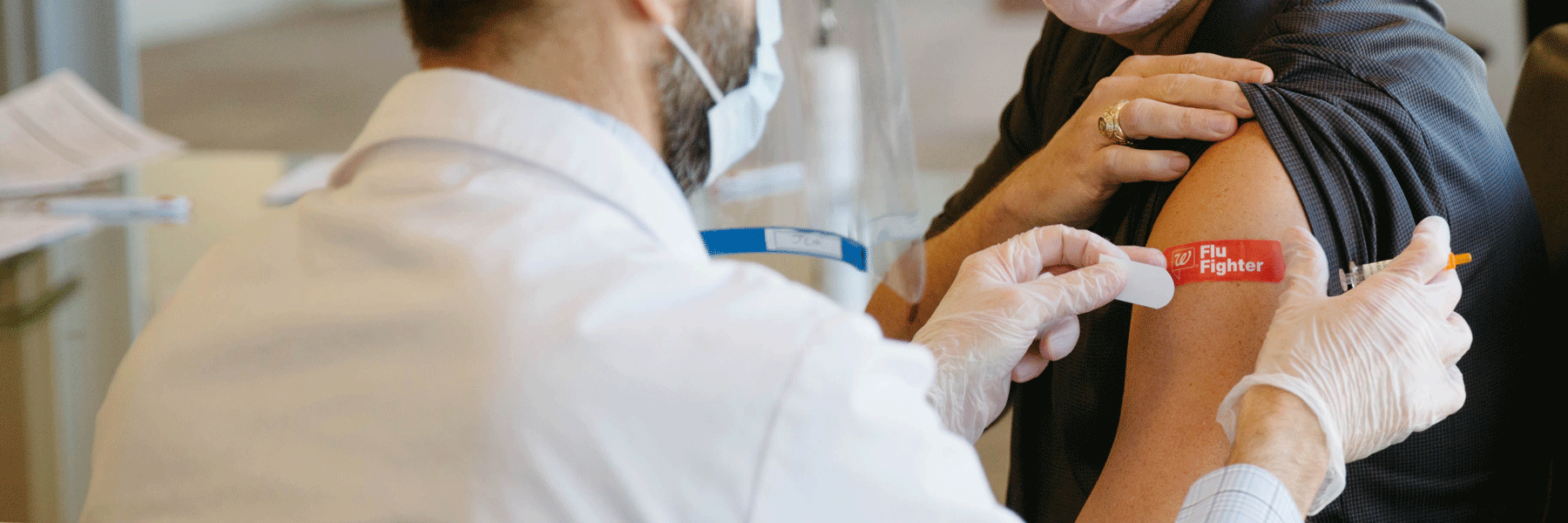It’s an unfortunate fact of life each fall and winter – one that Texans cough, sneeze and sniffle through. It generates billions in spending on over-the-counter medications each year. Perhaps making things worse, one of those OTC remedies even graces TVs year-round with ads featuring talking cartoon mucus in an obnoxious personification of the threat.
Cold and flu season is a nuisance in Texans and across the U.S. But more than that, it’s a serious public health concern and a threat to hospital operations – particularly during what’s still a slow recovery from the impact of the COVID-19 pandemic.
As we enter the 2023-24 cold and flu season, here’s a look at the impact that a heightened level of these viruses can make, and how they can be prevented.
The Impact of Cold and Flu
The seasonal intrusion of these illnesses is such an inherent part of American – and Texan – life each year that the resulting adverse data rarely register in mainstream news. The Centers for Disease Control and Prevention’s preliminary estimates for the 2022-23 flu season, ending last April 30, estimate between 26 million and 50 million flu illnesses nationwide, between 290,000 and 670,00 hospitalizations, and somewhere between 17,000 and 98,000 deaths. (CDC arrives at its estimates using a mathematical model, as the agency notes flu is not a reportable disease in most areas of the U.S.)
When cold and flu cases rise to the level of hospitalization, the strain it puts on a facility can be profound.
“We still have busy EDs post-COVID, so it just clogs it up more – both from sicknesses [and] also people wanting to be tested,” said Carrie Kroll, THA’s vice president of advocacy, public policy and political strategy. “It strains the availability of beds, which then strains the workforce. And it means that there are … people who have [potentially fatal illnesses] who may not get as quick of a response as they would otherwise.”
Ken Mitchell, MD, senior vice president and chief medical officer at St. David’s HealthCare in Austin, adds that hospitals are frequently holding new patients in the emergency department even before the beginning of cold and flu season.
“So a heavy season would really compound capacity problems in hospitals – certainly in Austin, but probably in all of the major metropolitan cities in Texas,” he said. “Then you layer on top of that the fact that we still are not fully back to normal staffing as a result of the pandemic. So most of our hospitals are still actively recruiting not only nurses, but therapists and radiology technicians and all of the ancillary support areas.
“And we also are all mostly still relying to some degree on contract labor. That’s a reflection of the fact that we’re not really back to normal staffing since the pandemic. So it would further stress our hospital staff, both employed staff as well as medical staff. And then on top of that, our own staff would also be experiencing colds and flu. So we would have staff out as a result of that.”
Preventing Illness
“One of the lessons from the pandemic is that a lot of the preventative measures that were implemented for COVID were highly effective against preventing influenza,” Dr. Mitchell notes. With masking and social distancing implemented across swaths of the U.S. – as well as the likely impact of heightened public consciousness – the 2020-21 flu season featured the lowest rate of lab-confirmed flu hospitalizations since CDC began collecting such data in 2005. So the top-line tips to guard against – and avoid spreading – cold and flu will look familiar to anyone who lived through the pandemic.
Get your flu shot. Vaccination against the flu is always THA’s headlining prevention message this time of year. This year’s version of the flu vaccine, Dr. Mitchell notes, is a quadrivalent shot. “So it’s got four different strains of influenza protection, which is more than what we’ve had historically. They used to be trivalent.”
The politicization and skepticism of the COVID-19 vaccine over the past two-plus years has spilled into other shots, and the flu vaccine hasn’t been immune to that increased hesitancy.
“There’s misconceptions about what the flu vaccine does and doesn’t do in terms of illness. That has always been the case; you just now layer on the fear or dislike of the COVID vaccine, and it makes that worse,” Kroll said.
“You always hear people say, ‘Well, I got vaccinated and I got the flu, so it doesn’t work.’ Well, the flu vaccine takes 10 days, roughly, to take [full] effect. So was it in that period? Were you perhaps less sick than you would have otherwise been? The flu vaccine is a moving target. Every year, they try – just like they’re going to do with COVID – to identify the worst strains. But it’s not a perfect science.”
CDC notes the vaccine reduces a person’s risk by between 40% and 60% during flu season.
Wash your hands. The most traditional, baseline act of sanitary behavior has science behind it. CDC says handwashing can prevent about 20% of respiratory infections. It recommends washing with soap and water for at least 20 seconds, about the time it takes to hum the song “Happy Birthday to You” twice through.
Cover your coughs and sneezes. “Flu viruses spread mainly by droplets made when people with flu cough, sneeze or talk,” CDC notes. The ideal public health tool to cover your cough or sneeze is a tissue. However, if a cough or sneeze comes on before you can get one handy, the “vampire” method – using the crook of your elbow – is an acceptable substitute.
If you’re sick, stay home. Social distancing and isolation worked during the throes of the pandemic, and they continue to be a tried-and-true method to stop the spread of any and all infectious diseases.
Related articles from The Scope
COVID-19 Heroes Day: Honoring Sacrifice
For health care facilities all over Texas, a day of reflection on the heroes and the fallen of the COVID-19 pandemic will tap into memories at polar ends – sadness…
Navigating Winter Weather in Texas: How to Stay Out of the Hospital
Staying out of the hospital during winter weather in Texas, or any region, involves taking precautions to prevent accidents, injuries and health issues. Here are some tips to help you…
Texas Hospitals Going Above and Beyond on Charity, Indigent Care
Everyone needs and deserves medical care. Texas hospitals understand that as well as anyone. And in a state with the country’s highest uninsured rate, where charity care and indigent care…
The COVID Compromise: Fighting for Safe Hospitals
To allow Texas hospitals to continue protecting their patients and their environments against COVID-19, the Texas Hospital Association had to get creative. Early in the Texas Legislature’s third special session…





